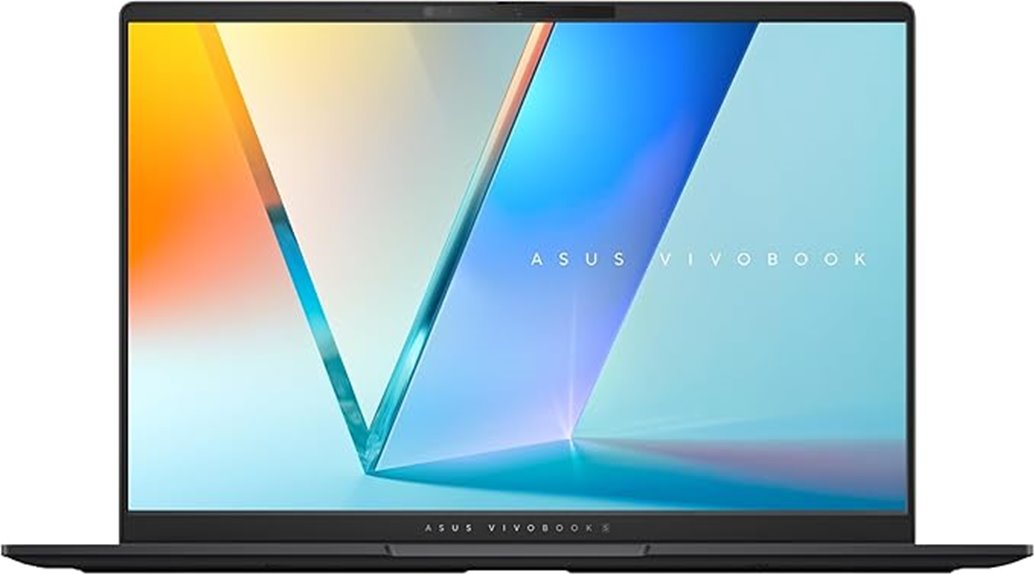Best Laptop for Android Development (Top 5 Picks for 2025)
In 2025, you’ll want the Apple 2024 MacBook Pro with M4 chip for its exceptional multitasking capabilities, or consider the Acer Swift X 14 for its vibrant OLED display and powerful GPU. The Apple 2025 MacBook Air offers portability without sacrificing performance, while the ASUS Vivobook S 14 combines power and lightweight design. The Samsung Galaxy Book4 Pro also shines with its high specs. Want to discover more about each option’s unique features?
In the interest of full disclosure, we would like to inform you that some links on our website are affiliate links. By clicking on these links and completing a purchase from our partners, we may receive a nominal commission at no extra cost to you. Rest assured, our affiliate partnerships do not compromise the integrity of our editorial content or product evaluations. For further clarification, kindly refer to our comprehensive affiliate disclosure.
Table of Contents
What Are the Best Laptop for Android Development to Buy This Year?
Here are my top picks for the best laptop for android development, you can consider this year.
Apple MacBook Pro Laptop with M4 chip
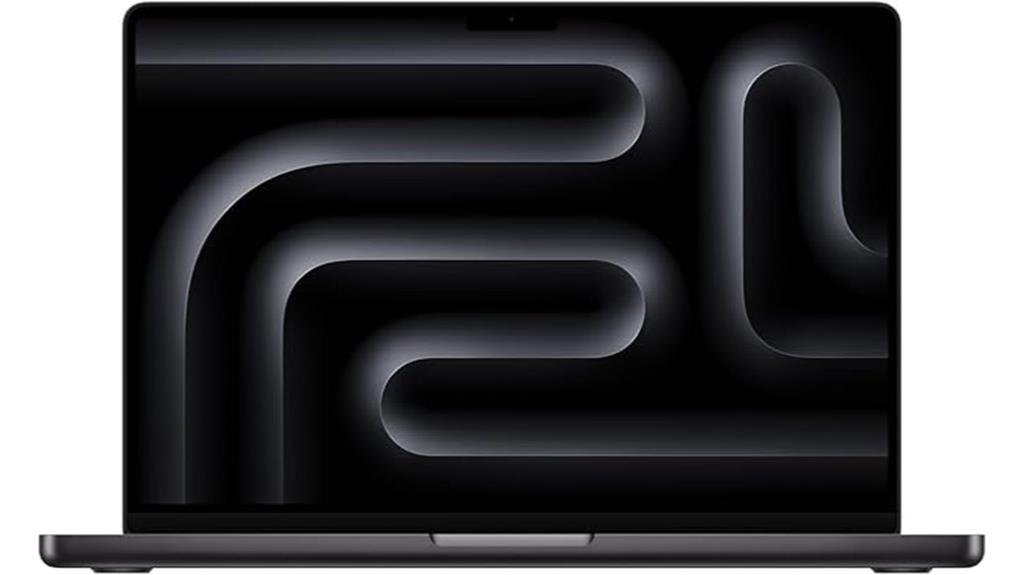
If you’re an Android developer seeking a powerful machine in 2025, the Apple 2024 MacBook Pro with the M4 chip stands out with its exceptional performance. Its 10-core CPU and GPU ensure smooth multitasking, making it perfect for running productivity and pro apps. You’ll appreciate the 14.2-inch Liquid Retina XDR display, which delivers stunning visuals with 1600 nits peak brightness. Plus, the all-day battery life keeps you productive whether you’re plugged in or on the go. With seamless integration into the Apple ecosystem, this laptop supports popular apps and enhances your development workflow, making it a top choice for developers.
Best For: The Apple 2024 MacBook Pro with M4 chip is best for developers and creative professionals seeking a powerful and visually stunning laptop for multitasking and productivity.
Pros:
- Exceptional performance with a 10-core CPU and GPU for smooth multitasking and running demanding applications.
- Stunning 14.2-inch Liquid Retina XDR display with high brightness and contrast for an immersive visual experience.
- Seamless integration within the Apple ecosystem, supporting popular applications and enhancing productivity.
Cons:
- Higher price point compared to some competitors in the market.
- Limited compatibility with certain Android development tools compared to Windows-based systems.
- Lack of upgradeability for RAM and storage post-purchase may restrict future expansion options.
Acer Swift X 14 Laptop (SFX14-72G-77NJ)
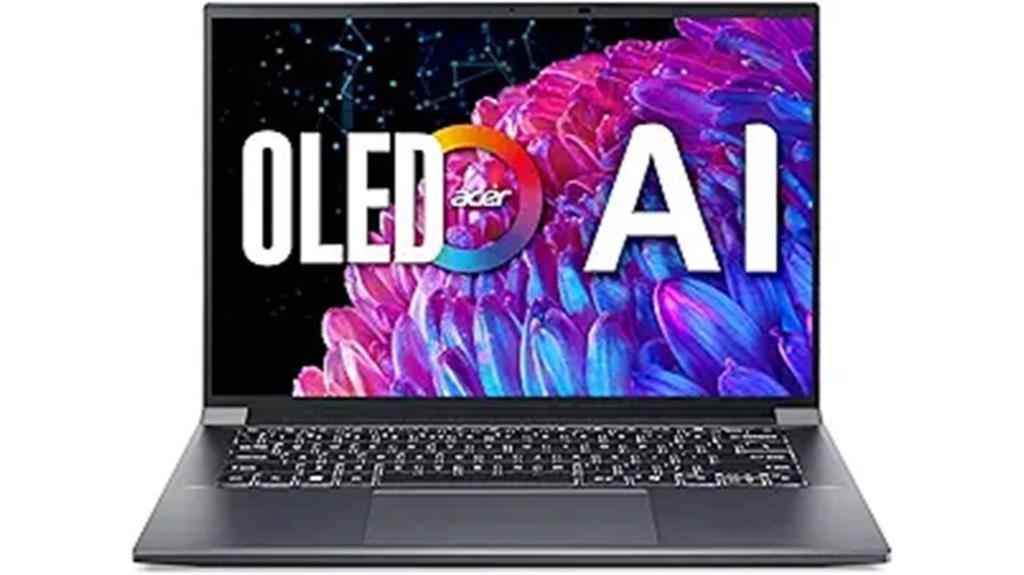
The Acer Swift X 14 Laptop (SFX14-72G-77NJ) stands out as an exceptional choice for Android developers in 2025, thanks to its powerful Intel Core Ultra 7 processor and NVIDIA GeForce RTX 4060 GPU. This laptop excels in performance, supporting demanding software with AI tools that enhance efficiency. Its stunning 14.5-inch OLED display offers vibrant colors and a 120Hz refresh rate, reducing eye strain. With 16GB of memory and a 1TB SSD, multitasking is seamless. Plus, its AI-driven collaboration tools and high-quality webcam ensure productive video calls. You’ll appreciate the robust connectivity options and advanced features for your development needs.
Best For: The Acer Swift X 14 Laptop (SFX14-72G-77NJ) is best for Android developers seeking powerful performance and advanced AI tools for their development projects.
Pros:
- Exceptional performance with Intel Core Ultra 7 processor and NVIDIA GeForce RTX 4060 GPU, ideal for demanding software.
- Stunning 14.5-inch OLED display with 120Hz refresh rate and TÜV Rheinland Eyesafe certification for reduced eye strain.
- Robust connectivity options including Killer Wireless Wi-Fi 6E, ensuring seamless multitasking and collaboration.
Cons:
- The 14.5-inch form factor may be less portable than smaller laptops.
- Higher price point may not suit budget-conscious users.
- Limited upgradeability options due to soldered memory and SSD.
Apple 2025 MacBook Air 15-inch Laptop with M4 chip
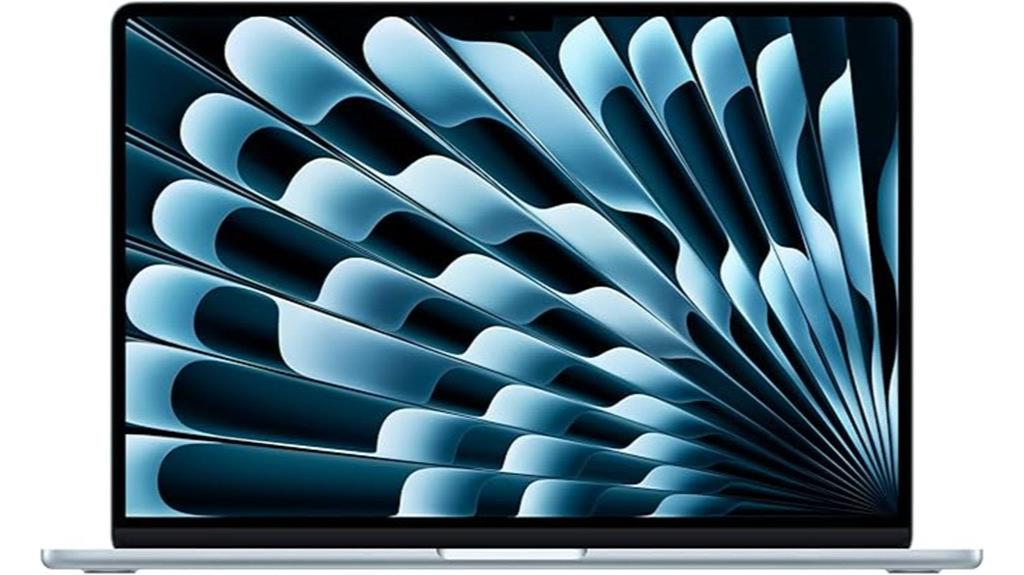
For developers seeking a powerful yet portable machine, the 2025 MacBook Air 15-inch with the M4 chip stands out as an ideal choice. This laptop delivers impressive performance, enabling seamless multitasking, video editing, and gaming. With up to 18 hours of battery life, you won’t be tethered to an outlet. The stunning 15.3-inch Liquid Retina display showcases rich colors and sharp details, perfect for app design. Plus, the advanced 12MP camera and six-speaker audio system enhance your video calls. With robust connectivity options, including Thunderbolt 4 and Wi-Fi 6E, this MacBook ensures you stay productive wherever you are.
Best For: Developers and creative professionals seeking a powerful, portable laptop for multitasking, video editing, and app design.
Pros:
- Exceptional performance with the M4 chip for fluid multitasking and gaming.
- Stunning 15.3-inch Liquid Retina display with vibrant colors and sharp details.
- Long battery life of up to 18 hours, ideal for on-the-go productivity.
Cons:
- Limited upgrade options due to non-user-replaceable components.
- Higher price point compared to other laptops with similar specifications.
- May lack some ports or compatibility with older peripherals.
ASUS Vivobook S 14 OLED Slim Laptop (M5406WA-DS76)
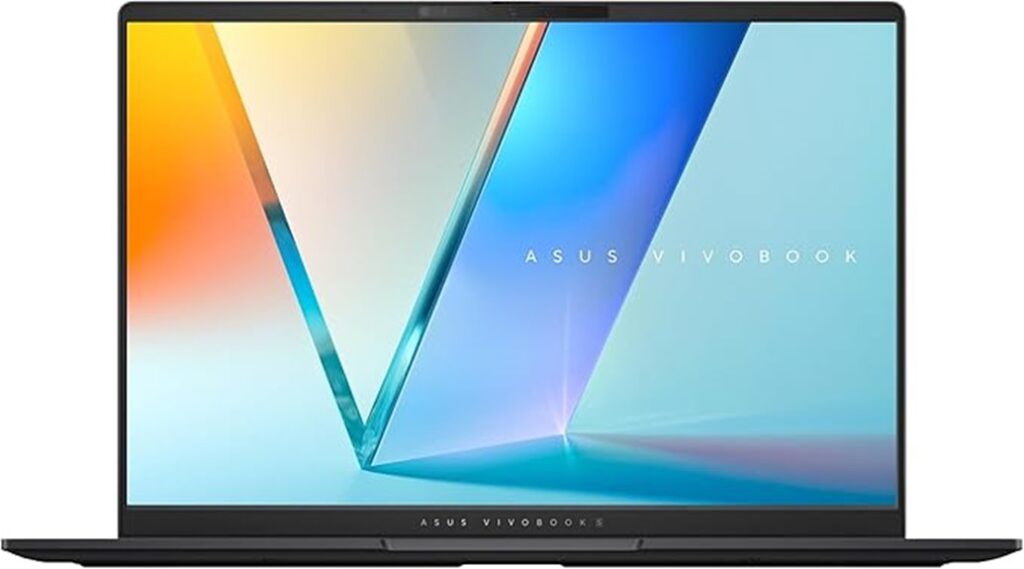
Engineered for developers seeking both power and portability, the ASUS Vivobook S 14 OLED Slim Laptop (M5406WA-DS76) stands out with its AMD Ryzen 9 365 processor, featuring 10 cores that deliver impressive performance for Android app development. With 24GB LPDDR5X RAM and a 512GB SSD, you’ll experience fast multitasking and ample storage. The stunning 14” 3K OLED display, boasting a 120Hz refresh rate and 600nits brightness, ensures vibrant visuals. Weighing just 2.87 lbs and measuring 0.63” thick, it’s ultra-portable. Plus, customizable RGB backlighting on the keyboard enhances your typing experience, making it a solid choice for developers on the go.
Best For: Developers seeking a powerful and portable laptop for Android app development and multitasking.
Pros:
- High-performance AMD Ryzen 9 365 processor with 10 cores for efficient multitasking and app development.
- Stunning 14” 3K OLED display with a 120Hz refresh rate and 600nits brightness for vibrant visuals.
- Lightweight and slim design at just 2.87 lbs and 0.63” thick, making it easy to carry on the go.
Cons:
- Limited upgrade options due to soldered RAM and SSD, which may affect long-term usability.
- No dedicated graphics card, which could limit performance for graphic-intensive tasks.
- Battery life may vary significantly with high-performance tasks and bright display settings.
Samsung Galaxy Book4 Pro Business Laptop (NP944XGK-KG4US)
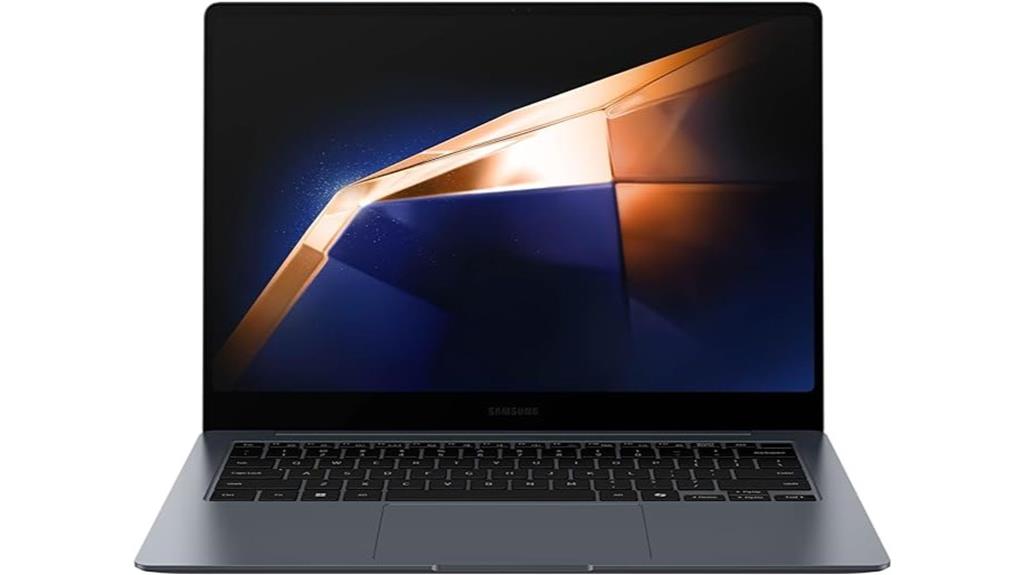
Designed with professionals in mind, the Samsung Galaxy Book4 Pro Business Laptop (NP944XGK-KG4US) stands out for its impressive 32GB of RAM and powerful Intel Core Ultra 7 processor, making it an excellent choice for Android developers in 2025. Its 14-inch 3K AMOLED touchscreen offers stunning visuals, while the lightweight design (just 2.71 lbs) ensures portability. With a 1TB SSD, you’ll have ample storage for your projects. Plus, the fast-charging battery provides up to 8 hours of use, perfect for long coding sessions. Enhanced connectivity options and robust security features add to its appeal for any developer on the go.
Best For: The Samsung Galaxy Book4 Pro Business Laptop is best for professionals and Android developers who require high performance and portability for their work.
Pros:
- Powerful Intel Core Ultra 7 processor and 32GB of RAM for seamless multitasking.
- Stunning 14-inch 3K AMOLED touchscreen display for excellent visual clarity.
- Lightweight design at 2.71 lbs, making it easy to carry for on-the-go use.
Cons:
- High retail price of $1749 compared to competitors with similar specs.
- Limited RAM upgrade options in key markets, maxing out at 16GB.
- OEM SSD from Western Digital may be perceived as low quality for the price.
ALSO READ: Best Laptop for Genealogy Research, Best Laptop for Freelancers , Best Laptops for Movies, Best Laptop for Excel Modeling, Best Laptop for Webcam Modeling, Best Laptops for Coding and Programming, Best Laptop for Architect, Best Laptop for Chemical Engineering Students, Best Laptop for Drone Mapping, Best Laptop for Automotive Programming
Factors to Consider When Choosing the Best Laptop for Android Development
When choosing a laptop for Android development, you need to consider several key factors. Performance and processing power are crucial for running development tools smoothly, while display quality and size can impact your coding experience. Don’t forget about battery life, operating system compatibility, and connectivity options, as these can significantly influence your workflow.
Performance and Processing Power
Choosing the right laptop for Android development hinges on performance and processing power, ensuring you can efficiently handle the demanding tasks involved. Look for a laptop with a powerful multi-core processor, ideally a 10-core CPU, to smoothly run development environments and emulators. A high-performance GPU, especially one designed for creators, can enhance rendering speeds and support graphically intensive applications. You’ll also want at least 16GB of RAM for seamless multitasking and running multiple applications simultaneously. Fast SSD storage of 512GB or more is essential for quick data access and reduced load times. Lastly, an optimized cooling system is vital to maintain performance during long coding sessions and prevent thermal throttling of your CPU and GPU.
Display Quality and Size
While performance and processing power are vital for Android development, display quality and size play a significant role in your overall experience. A high-resolution display, like 2880 x 1800, enhances clarity and detail, making it easier to design and debug applications. Opt for a laptop with at least a 14-inch screen to give you ample space for multiple windows and side-by-side coding. Features such as a 120Hz refresh rate improve fluidity, which is especially helpful when testing animations and UI transitions. High brightness levels, around 1600 nits, ensure visibility in various lighting conditions, while color accuracy from technologies like Calman Verified certification helps your app designs appear as intended across different devices.
Battery Life and Efficiency
Battery life is one of the top factors to consider for Android development, as long coding sessions require a laptop that can keep up without constantly needing a charge. Look for laptops equipped with efficient processors that feature advanced power management to maximize battery life during demanding tasks like compiling code and running emulators. Display technology also matters; high-resolution screens can drain your battery faster if they’re not optimized for energy efficiency. Additionally, modern processors with AI capabilities can enhance battery efficiency by dynamically adjusting performance based on your workload. Lastly, pay attention to battery capacity measured in watt-hours (Wh), as higher capacities generally provide longer use times, especially during intensive development activities.
Operating System Compatibility
For Android development, the operating system on your laptop plays a significant role in your overall experience. Choose a compatible OS like Windows, macOS, or a Linux distribution, as Android Studio supports these platforms. Make sure it’s the latest version to stay in sync with the newest Android SDK and development tools. Performance is crucial; your OS should efficiently handle virtualization since Android emulators demand considerable resources. Look for laptops that give you easy access to command-line tools and terminal applications, vital for your development tasks. Finally, ensure the OS supports necessary software and libraries, like the Java Development Kit (JDK) and Gradle, to streamline your Android app development process.
Port Selection and Connectivity
When diving into Android development, you’ll want to pay close attention to port selection and connectivity options on your laptop. First, ensure it has multiple USB ports, including both USB-C and USB-A, to connect essential devices and peripherals. Look for Thunderbolt ports to enable faster data transfer and connect to external displays or high-speed storage. HDMI or DisplayPort outputs are crucial for easily connecting to external monitors, enhancing your multitasking and debugging capabilities. A microSD card reader can be a game-changer, allowing quick access to files from mobile devices. Lastly, evaluate wireless options like Wi-Fi 6E and Bluetooth 5.3 for improved connectivity with other development tools and devices.
Weight and Portability Features**
As you navigate the world of Android development, weight and portability become essential factors to consider, especially if you’re often working on-the-go. Lightweight laptops, typically around 2.5 to 3.5 lbs, strike the perfect balance between comfort and convenience. A slim profile under 0.7 inches thick makes it easy to slip your laptop into a backpack or briefcase without adding bulk. You’ll also want a battery life that exceeds 8 hours, ensuring you can tackle extended coding sessions away from power outlets. A 14-inch screen with high resolution, like 2880 x 1800, offers ample workspace while maintaining portability. Lastly, prioritize connectivity options, such as multiple USB ports and card readers, to seamlessly integrate your development tools and accessories.
Frequently Asked Questions
What Operating System Is Best for Android Development?
For Android development, you’ll find that Linux-based systems are often preferred due to their flexibility and compatibility with development tools. However, Windows and macOS can also work well, depending on your personal preferences and requirements.
How Much RAM Is Ideal for Android Development Laptops?
For Android development, you’ll want at least 16GB of RAM. This amount ensures smooth multitasking and efficient performance when running emulators and other resource-intensive applications. More RAM can significantly enhance your development experience.
Can I Use a Chromebook for Android Development?
Yes, you can use a Chromebook for Android development, but it might limit your options. You’ll need to install Linux or use cloud-based solutions to access necessary tools and features for effective development.
Is a Dedicated GPU Necessary for Android Development?
A dedicated GPU isn’t strictly necessary for Android development, but it can enhance performance, especially when running emulators or graphics-intensive apps. If you plan on heavy graphics work, consider investing in one.
How Do I Optimize My Laptop for Android Development?
To optimize your laptop for Android development, ensure you have sufficient RAM, use SSDs for faster storage, keep your software updated, disable unnecessary startup programs, and regularly check for malware to maintain performance.
My Final Opinion
Choosing the right laptop for Android development in 2025 is crucial for your productivity and creativity. Each of the options we’ve explored offers unique strengths, whether it’s power, portability, or performance. Consider your specific needs and preferences, and you’ll find a device that elevates your development experience. Don’t compromise on quality; invest in a laptop that empowers you to bring your app ideas to life with ease and efficiency. Happy coding!
